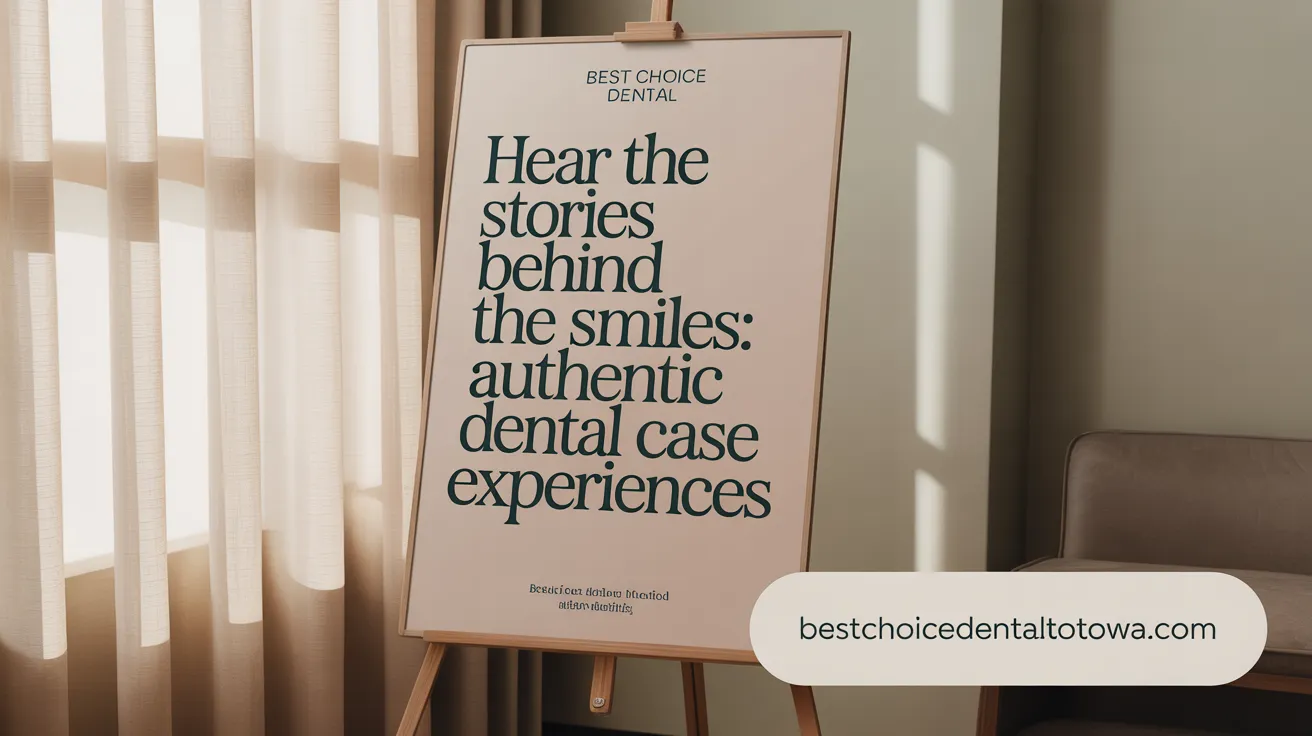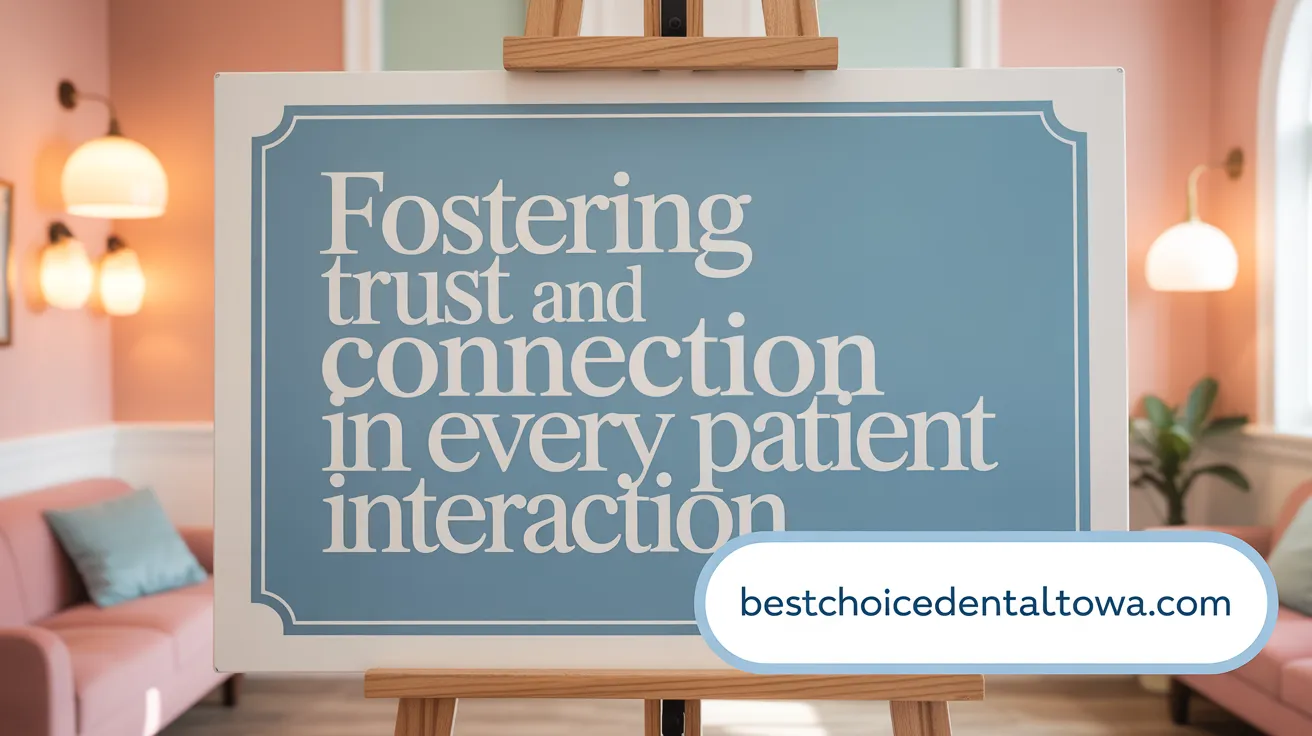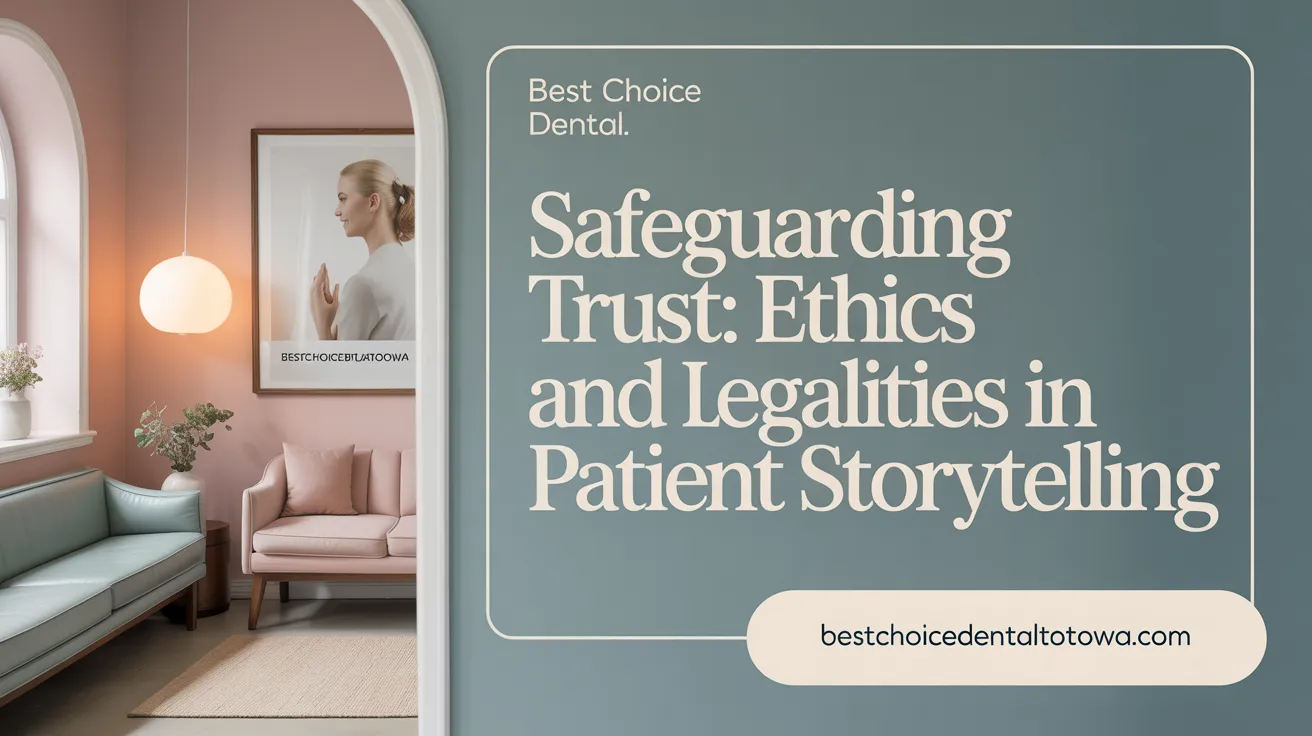The Transformative Power of Sharing Patient Stories
In the healthcare world, patient success stories serve not only as testimonials of effective treatment but also as powerful tools that build trust, inspire hope, and humanize the clinical experience. Sharing authentic, detailed patient narratives from dental transformations to complex medical recoveries can improve patient satisfaction, empower healthcare teams, and enhance clinical outcomes. This article explores how healthcare providers leverage genuine patient stories to create ‘real smiles’ and deliver meaningful, life-changing results.
Showcasing Real Dental Transformations Through Patient Voices

What role do patient testimonials play in dental care?
Patient testimonials provide valuable insights into the human impact of dental treatments. They showcase authentic stories of transformations, such as successful dental implant surgeries, smile makeovers, veneer placements, and effective management of dental trauma. These stories highlight improvements in patients' confidence, appearance, and quality of life. See more about Patient Testimonials and Dental Transformations.
Examples of transformative dental cases
Several dental practices share compelling patient stories:
- Sarah's dental implant journey restored both function and aesthetics after tooth loss.
- John’s smile makeover combined teeth whitening and Invisalign orthodontics, greatly enhancing his self-confidence.
- Emma’s veneers improved the appearance of her front teeth with a minimally invasive method.
- Dr. O’Connor’s patients reported pain-free implant placements and full-mouth restorations that significantly boost smiles and oral health.
For detailed cases, visit Welham Green Dental Transformations and Dr. O'Connor Dentist Testimonials.
How do dental practices use technology to improve patient results?
Modern technology plays a pivotal role in achieving precise and comfortable dental care. Key technologies include:
- 3D in-office scans and digital impressions allow for accurate treatment planning.
- Cone Beam CT (CBCT) imaging offers detailed 3D views for implant placement and diagnostics.
- Laser-assisted dentistry ensures minimally invasive procedures with less discomfort.
- Digital imaging tools such as intra-oral cameras help personalize care and visually communicate progress.
Learn more about Modern Dental Technology and Advanced Dentistry Treatments.
Personalized care approaches in dental practices
Dental teams emphasize tailored treatment plans that address each patient’s unique needs. This includes thorough consultations, empathetic communication, and attention to comfort. Practices often provide same-day emergency care and minimize anxiety by maintaining welcoming environments. Integrating aesthetic and functional treatments, including cosmetic procedures and restorative solutions, enhances overall patient satisfaction. More on Patient-Centered Dental Care and Compassionate Dental Staff.
The combination of authentic patient narratives, advanced dental technologies, and personalized care creates a powerful testament to the transformative potential of modern dentistry. Explore the impact of Patient Stories in Dentistry and the Power of Patient Testimonials.
Building Trust and Community Through Compassionate Care and Communication

How does patient-centered care enhance the healthcare experience?
Patient-centered care is built on principles that prioritize the individual needs, preferences, and values of each patient. This approach fosters an environment of respect, empathy, and transparent communication. Patients are encouraged to be active participants in their treatment by involving family members and expressing their concerns openly. These practices boost trust between patients and providers, leading to improved satisfaction and better health outcomes. By treating patients holistically and recognizing their social and emotional contexts, healthcare providers create stronger partnerships that support personalized care.
Importance of empathetic communication
Empathetic communication from healthcare staff plays a critical role in shaping how patients perceive their care. Polite, warm, and attentive interactions ease anxiety and help patients feel genuinely cared for. Clear explanations of diagnoses and treatment options empower patients to make informed decisions, building confidence in their care team. When patients feel understood and respected, adherence to treatment improves, and the overall experience is more positive. For further insights, see examples of empathetic communication in healthcare.
Community involvement and education
Healthcare practices that actively engage with their communities demonstrate commitment beyond individual care. Initiatives such as oral health education programs and accessible dental membership plans promote preventative care and wellness. By educating patients and community members, clinics build a foundation of trust and empower people to take control of their health. These efforts also reflect a sense of responsibility towards community well-being, enhancing the healthcare provider’s reputation and strengthening relationships.
Timely and accessible care initiatives
Operational improvements like providing timely appointment reminders, implementing streamlined check-in processes, and offering same-day emergency appointments directly enhance patient experience by reducing wait times and uncertainty. Such measures alleviate stress and improve access to care. Practices that adopt modern technologies for scheduling and communication ensure that patients receive prompt and efficient service. These initiatives demonstrate respect for patients' time and needs, cultivating satisfaction and encouraging continued engagement with care services.
The Science and Strategy Behind Sharing Patient Narratives
Why are patient stories so effective in healthcare?
Stories have a unique power to engage multiple brain regions, including those tied to emotion and memory. This engagement helps patients and healthcare providers connect on a deeper level, beyond clinical facts. By sharing experiences, patients feel less isolated, and providers gain insight into the lived realities of illnesses, fostering empathy and improved understanding. For more insights, see The Science Behind Patient Stories.
How does sharing patient narratives impact clinical staff and patient experience?
When clinical staff frequently hear patient stories, their confidence and engagement tend to increase. This heightened awareness improves both operational aspects like timely access and staff helpfulness, as well as relational elements such as patient-provider communication. However, the positive effects depend on how confidently staff interpret and integrate these narratives into care practices. Research on this can be found at Sharing Patient Narratives with Clinical Staff Is Linked to Better Patient Experience and Impact of Patient Narratives on Staff.
Behavioral science of storytelling
Patient stories activate dopamine release and enhance memory retention, making health information more relatable and memorable. Effective narratives include personal, vivid details structured around a hook, obstacles faced, treatment impact, and hopeful outcomes. Behavioral science suggests such storytelling can guide patient support strategies and help reduce health inequities. Learn more at The Power of Stories in Healthcare.
Narrative medicine benefits
Narrative medicine equips clinicians with skills in recognizing, interpreting, and emotionally engaging with patient stories. This approach enhances empathy, reduces clinician burnout, and builds stronger patient-provider relationships. It helps providers view patients holistically, considering emotional and social contexts that improve care quality. For comprehensive details see Embracing Patient Stories: The Benefits of Narrative Medicine and Narrative Medicine Overview.
Best practices for storytelling in healthcare
To maximize impact, healthcare stories should:
- Include authentic, personal details without compromising privacy
- Follow a clear structure for engagement and meaning
- Be collected and shared regularly to foster ongoing learning
- Be accompanied by staff training to boost narrative competence
- Ensure patient consent and protect confidentiality
Guidance on privacy and consent is available at Sharing Patient Success Stories Through HIPAA Compliant Emails and Sharing Anonymized Patient Stories While Maintaining HIPAA Compliance.
Integrating patient stories thoughtfully creates a more humane, patient-centered healthcare experience while advancing clinical outcomes and staff satisfaction. Explore principles of patient-focused care at Patient-Centered Care and learn how storytelling enhances healthcare communication at The Science Behind Patient Stories.
Ethical and Legal Considerations in Sharing Patient Success Stories

What are key legal considerations when sharing patient stories?
Healthcare providers must prioritize patient privacy and comply fully with HIPAA regulations when sharing success stories. Explicit consent is essential before any patient information is used publicly. This involves informing patients about how their stories will be shared and securing their agreement. Additionally, employing HIPAA-compliant platforms, such as secure email services, ensures protected health information (PHI) is securely handled. Providers must anonymize or de-identify identifiable details to prevent privacy breaches as described in Sharing anonymized patient stories while maintaining HIPAA compliance.
How can stories remain authentic while protecting patient privacy?
Authenticity in patient storytelling can be preserved through careful techniques that safeguard confidentiality. Using composite narratives—which blend elements from multiple patients—or anonymizing personal details like names, dates, and specific medical information helps maintain trust. Providers can generalize certain medical facts and alter demographic data without losing the story’s meaningful impact. Respecting patient preferences around information sharing also reinforces authenticity and ethical storytelling. For further insights, see The power of stories in healthcare.
De-identification techniques
- Removing names and geographic identifiers
- Omitting specific dates or replacing them with timeframes
- Altering or generalizing medical condition details
- Avoiding rare or unique case specifics that could reveal identity
Obtaining patient consent
- Clearly explaining use of stories
- Securing written permission prior to sharing
- Offering options for anonymity
By combining robust privacy safeguards with genuine patient voices, healthcare providers can build trust, educate their communities, and inspire hope while upholding ethical standards. For more on this topic, see Sharing patient success stories through HIPAA-compliant emails.
Harnessing Patient Testimonials to Enhance Healthcare Marketing and Education
How do patient testimonials strengthen healthcare marketing?
Patient testimonials are a powerful tool for healthcare marketing as they provide authentic, real-world validation of the quality and effectiveness of medical services. Genuine testimonials build credibility and foster trust among potential patients by presenting relatable stories that highlight tangible benefits and positive outcomes. Patients sharing their experiences reduce anxiety for prospective clients by offering transparency about care processes and results. These stories also serve to differentiate healthcare providers in a competitive market by illustrating unique, compassionate approaches and advanced technologies employed in treatment (see Patient Testimonials - Benefits and Impact, Patient Testimonials).
What channels are effective for sharing patient success stories?
To maximize reach and impact, healthcare providers utilize multiple channels to share patient testimonials. Websites and dedicated landing pages serve as centralized hubs where detailed story collections are accessible. Social media platforms amplify reach and encourage community engagement through shares and comments. Video platforms enable dynamic storytelling, making patient experiences more vivid and memorable, while email campaigns deliver personalized stories directly to subscribers. Additionally, third-party review sites increase the trustworthiness of testimonials and enhance search engine optimization, attracting organically interested patients (Serialized patient success stories transforming healthcare marketing, Sharing HIPAA compliant patient stories, Patient Testimonials).
Testimonials as educational tools
Beyond marketing, patient stories educate both prospective patients and healthcare teams. They illustrate real treatment journeys, helping patients understand what to expect and alleviating fears through shared experiences. For healthcare staff, narratives improve empathy and patient-centered communication by offering insight into patient perspectives and emotional responses (Patient storytelling in healthcare research, Narrative medicine and benefits, Sharing patient narratives with clinical staff is linked to better patient experience).
Building credibility and patient engagement
Consistently collecting and showcasing authentic testimonials fosters ongoing patient engagement and strengthens healthcare brand reputation. Transparency about patient care and outcomes, along with respectful consent practices, enhances confidence. Diverse and regularly updated stories reflect comprehensive services and demonstrate commitment to quality, encouraging prospective patients to seek care and remain loyal over time (Patient-centered care principles and benefits, Benefits of authentic patient testimonials, Patient Testimonials).
Inspiring Hope: The Impact of Serialized Patient Stories on Recovery and Provider Culture
What are the benefits of serialized patient success stories?
Serialized patient storytelling offers a powerful way to humanize medical care by providing an in-depth and continuous look at individual recovery journeys. This format keeps viewers engaged over time, showing how patients face challenges, respond to treatments, and achieve long-term outcomes. Such stories inspire hope and motivate current patients by demonstrating real-world possibilities for improvement and success. Furthermore, they serve as educational tools for families and caregivers by illustrating treatment processes and recovery milestones in detail. For more insights, see serialized patient success stories.
How do patient stories influence healthcare providers?
For healthcare teams, sharing serialized patient narratives enhances morale and promotes empathy among staff members. These stories build cohesion within teams by fostering a shared understanding of patient experiences and emphasizing the meaningful impact of care. This environment encourages a patient-centered culture where providers feel more connected to their work and motivated to deliver compassionate, personalized care. Learn more about the impact of patient stories on health outcomes, sharing patient narratives with clinical staff, and the power of stories in healthcare.
Examples from diverse medical fields
Serialized patient stories are used across multiple specialties, including stroke rehabilitation, cancer recovery, and speech-language therapy. In stroke recovery, patient videos illustrate the critical importance of early intervention and motivate both patients and families. Meanwhile, cancer treatment testimonials highlight gradual progress, helping patients navigate difficult journeys. These examples show the broad applicability and effectiveness of episodic storytelling in healthcare in enhancing care and outcomes across healthcare settings. For additional stories and examples, explore Inspirational Medical Stories and Patient outcomes in nursing.
Bringing Patient Stories to the Forefront of Healthcare Excellence
Patient success stories are more than testimonials; they are vital instruments for advancing patient-centered care, improving health outcomes, and strengthening healthcare relationships. By embracing authentic narratives across specialties, healthcare providers not only showcase real smiles and real results but also cultivate trust, empathy, and innovation. Ethical sharing practices and strategic storytelling empower patients and providers alike, transforming healthcare into a more responsive, engaging, and human experience.
